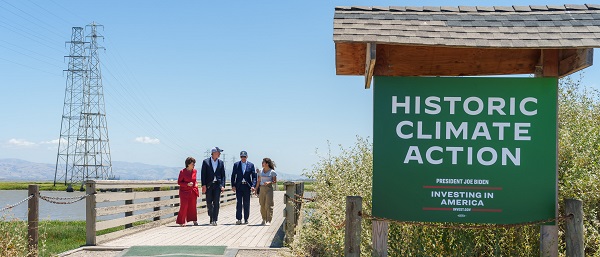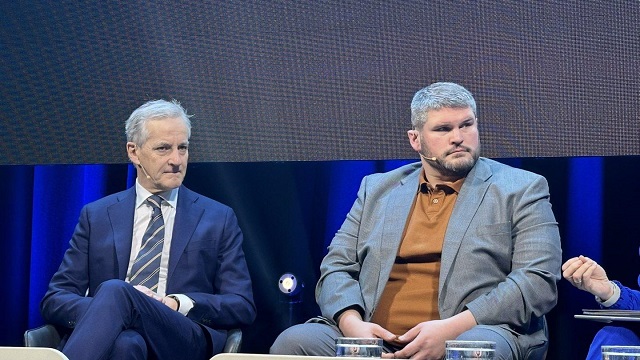Economy
“Ownership is Reconciliation” Indigenous Resource Network rebrands to emphasize shift in focus
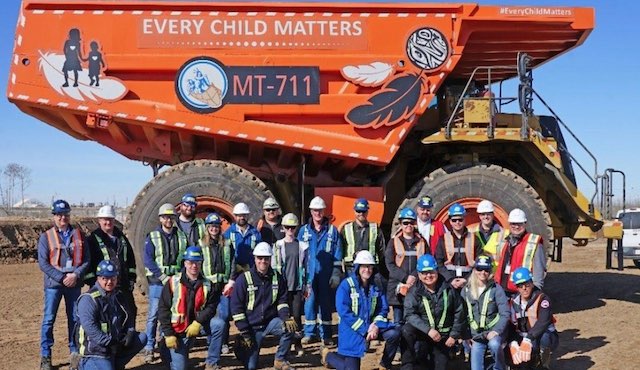
News release submitted by the Indigenous Resource Network
Indigenous Resource Network Launches Ownership is Reconciliation
The Indigenous Resource Network (IRN) is proud to unveil its latest “Ownership is Reconciliation” Campaign, marking a transformative shift in focus and rebrand from its original “Ownership Changes Everything” campaign.
This new initiative aims to convey the compelling story of Indigenous ownership in resource projects, resonating with a diverse audience including social media, supporters, and fellow Indigenous organizations. “We initiated the ‘Ownership Changes Everything’ campaign to showcase the positive impact of Indigenous ownership in resource projects. The response has been overwhelming, with strong resonance among policy makers, industry, and Indigenous communities” shared John Desjarlais, Executive Director of IRN.
Central to the campaign’s mission is enlightening Canadians about the pivotal role Indigenous ownership plays in advancing the path to reconciliation. As part of this campaign, IRN advocates for the formation of a National Indigenous Guaranteed Loan program, empowering Indigenous communities with crucial access to capital required for equitable participation in major projects nationwide. Desjarlais elaborated, stating, “While it may not be a cure for all of the issues we see in our communities, it is an essential step in revitalizing funding opportunities for Indigenous development. We are heartened by the industry’s resounding support for a national program, as it de-risks projects and facilitates the vital capital Indigenous communities need to pursue ownership.”
IRN invites all stakeholders, Indigenous and non-Indigenous alike, to join forces in promoting a future where reconciliation and resource development harmoniously converge, generating sustainable employment opportunities and fostering shared prosperity for all.
Most Indigenous people support resource development: poll
In the polarized “environment versus economy” debate we’re having, there’s often an assumption, or an assertion, that Indigenous peoples are mostly against resource development. This is manifested in blockades, protests at legislatures and university campuses, and cries from activists that they stand in solidarity with Indigenous people when they stand against mining, oil and gas,
commercial fishing, hydro, and forestry projects.
For those familiar with the matter, this has always been a bit puzzling. Resource development is often the biggest economic driver of Indigenous communities, since it provides revenues for nations and well-paying jobs closer to home. Indigenous businesses are 40 times more likely to be involved in the extractive industry than Canadian ones.
There are absolutely cases where Indigenous nations have had disputes with resource companies, and when their rights have been disrespected. But this is not the same as being against resource development in principle. The public discussion of the issue has failed to grasp that key distinction: Indigenous peoples are not generally opposed to development; they are opposed to not being included, and they are against assuming risks without reaping any of the rewards.
To test that assumption, the Indigenous Resource Network, a platform for Indigenous workers and business owners involved in resource development, commissioned a poll by Environics Research. A total of 549 self-identified First Nations, Metis, and Inuit people living in rural areas or on reserves across Canada were interviewed by telephone between March 25 and April 16.
The poll found that a majority, 65 per cent, said they supported natural-resource development, while only 23 per cent were opposed. When asked how they’d feel if a new project were proposed near their own community, supporters outweighed opponents 2 to 1 (54 to 26 per cent). Not surprisingly, support was higher among working-age (35- to 54-year-old) respondents (70 per cent) than younger ones (18- to 34-year-olds, at 56 per cent), while Indigenous men were more likely to oppose resource development (28 per cent) than Indigenous women (19 per cent).
When asked more specifically about types of resource development, most supported both mining (59 per cent in favour versus 32 per cent opposed) and oil and gas development (53 per cent for, versus 41 per cent against). The main reason they cited was the “urgent priority” of access to health care that comes with economic development and jobs. They said other issues, such as governance, education, traditional activities, and federal transfers, were less important.
All this indicates a path toward greater social licence by Indigenous peoples to develop resources. For many respondents, their support hinges on the likely costs and benefits to them and their communities, as it does for most people. Respondents were more likely to support a project if it used best practices to: protect the environment (79 per cent), ensure safety (77 per cent), and benefit the community economically, such as by providing jobs and business opportunities (77 per cent). Interestingly, community consultation (69 per cent) and consent (62 per cent) were not as important, even though the public discourse tends to emphasize them.
Perhaps the most important finding was that the more a respondent thought he or she knew about the issue, the more he or she was likely to support resource development. Those who work in the industry or who discuss it beyond social media have a much better understanding of what’s needed for a project to get approved, the standards that must be adhered to, and the reclamation that must occur when a project is complete or decommissioned. For them, it’s more than saying yes or not to resource development; it’s about ensuring projects meet the highest possible standards.
The relationship between the resource sector and Indigenous communities isn’t perfect. But it’s economically important, and we would be well served by improving, not severing it. It’s high time we pushed the discussion about Indigenous peoples and resource development past polarizing and simplistic slogans. We hope this poll does just that. Most Indigenous peoples support resource development when high environmental standards are applied and good jobs and economic benefits follow. Let’s ensure that’s the case with every project.
Business
Canada has an energy edge, why won’t Ottawa use it?
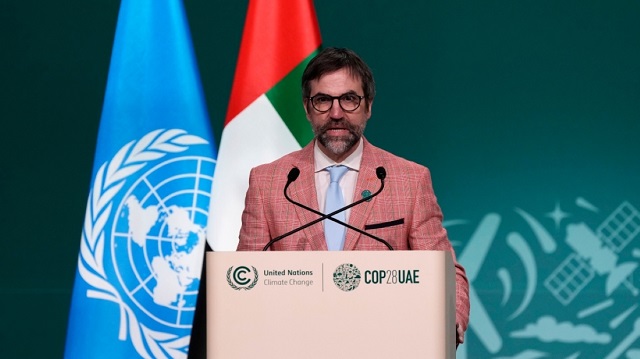
Energy abundance, properly managed, isn’t just Canada’s strategic edge—it’s our ace in the hole while allies scramble to rearm their energy systems and competitors sprint ahead. We can keep sleepwalking through the annual ritual of self-imposed shackles, watching golden opportunities slip through our fingers, or we can finally show up as a serious player in the energy security game we’re already knee-deep in.
What the public doesn’t see behind all the climate summit fanfare is a carefully choreographed performance where capitals everywhere scramble to perfect their lines for the UN’s annual pageant. COP30 descends on Brazil in mid-November, and once again Ottawa looks primed to arrive clutching a stack of promises, desperately hoping that thunderous applause will somehow count as tangible progress in the real world.
Thanks to years of bureaucratic capture, our government keeps churning out the measures most fervently demanded by the climate lobby, and this ritual proceeds as if “net zero” were still a credible roadmap rather than a marketing slogan stretched so transparently thin it’s practically see-through. But out in the real world—away from the theatrical staging—the energy system keeps issuing updates of its own that no amount of wishful thinking can erase. The question this year cannot be what flashy new prohibition Ottawa can unveil on cue: are our leaders finally prepared to read the room? Away from the virtue-signalling theatre, countries are quietly adjusting to immovable realities: demand keeps climbing, reliability actually matters, and security trumps sermonizing—and we should be looking south to see what’s really working.
From 2005 to 2023, U.S. per-capita CO₂ emissions from energy plummeted by nearly a third. Not because of performative pledges or green grandstanding, but because coal quietly gave way to natural gas, with renewables filling in around the edges where they actually made sense. Pick almost any grid that made this pragmatic switch, and you’ll discover the same inconvenient pattern that climate absolutists prefer to ignore: fewer emissions and electricity you can actually count on when you flip the switch. Maryland serves as a clean example, where coal shrank from the backbone to a footnote as gas surged, helping keep the lights blazing when people needed them most.
Canada should pay very close attention to these uncomfortable truths. We benefit from hydro and nuclear in some regions, but what the green lobby doesn’t want to acknowledge is that our electricity demand is climbing relentlessly. Population growth alone would guarantee that outcome. Add the explosion in AI technology and it becomes utterly unavoidable, despite the silence from environmental groups. Even the cheerleaders of the new digital economy are brutally honest about this reality when pressed. The head of the world’s biggest AI chipmaker isn’t jesting when he bluntly tells the U.K. it will need gas turbines alongside nuclear and renewables to power its tech ambitions—inconvenient facts that shatter green fairy tales.
Another stubborn reality that doesn’t make it into climate summit speeches is that the International Energy Agency estimates oil and gas companies spend roughly half a trillion dollars every year just to keep output flat—a financial reality that exposes the “stranded assets” narrative as wishful thinking. Without this continual reinvestment, U.S. shale would crater within a single year. It’s rather difficult to describe that as a system drifting quietly into retirement, rather than an industrial backbone that still carries most of the load while activists pretend otherwise. If you’re Canada, that looks less like a looming problem than a golden opening that our competitors are already seizing.
Geopolitics is saying the same thing out loud, for those willing to listen beyond the climate activism echo chamber. J.P. Morgan bluntly calls this the “new energy security age,” and Europe is working frantically to end its dependence on Russian LNG—not for climate reasons, but for survival. Japan is expanding its LNG fleet, and Mexico is inking billion-dollar supply deals while climate campaigners aren’t looking. Strip away all the green branding and virtue-signalling, and you get a core calculation that energy security is nothing short of national security—and countries that get snookered by activist rhetoric into forgetting that harsh reality lose far more than bragging rights at international summits.

The Woodfibre LNG site is seen on Howe Sound in Squamish, B.C. THE CANADIAN PRESS/Darryl Dyck
Our allies have been leaning on us to quit sitting on the sidelines and deliver something concrete. And back home, even Ottawa’s mandarins are finally muttering what everyone else has known all along. For the next several years, at minimum, gas remains the most economical, rock-solid baseload option across vast stretches of the continent. Meeting that surging demand would deliver high-paying jobs, bulletproof alliances, and slash global emissions compared to the world burning more coal. Turning our backs on it means standing idle while rival producers rush to fill the void—all so we can pat ourselves on the back for warming the bench.
If this strikes you as abstract theorizing, cast your eyes toward California. A righteous crusade to shutter refineries didn’t magically eliminate the appetite for fuel—it simply exported the dirty work elsewhere, shipping out the jobs and the supply cushion that shields consumers from price shocks. The Golden State now scrambles like a panicked shopper whenever supply chains hiccup, because when push comes to shove, affordability draws the hard red line on what voters will tolerate. Meanwhile, the global landscape has shifted dramatically, with the United States now claiming the crown as top exporter of refined petroleum and LNG.
The lofty rhetoric of “climate solidarity” has quietly faded into something far more practical—nations ruthlessly pursuing their own interests. Even the most progressive speechwriters now pepper their drafts with buzzwords like ‘pragmatism’ and ‘realism.’ It represents nothing short of a grudging acknowledgment that wishful thinking won’t keep the lights on when the grid starts groaning.
British Columbia, meanwhile, sits perched atop the Montney—one of the continent’s most spectacular gas reservoirs—boasting the shortest shipping lanes to Asian markets. Indigenous nations are shrewdly securing equity stakes in LNG ventures while demanding genuine partnership—a blueprint that marries reconciliation with cold, hard prosperity. Those outbound cargoes are displacing coal-fired power overseas. If your genuine goal involves slashing real-world emissions, that achievement trumps a dozen flowery Ottawa press releases.
So no, the magic formula isn’t “all of the above,” but rather “the best of the above.” It demands deploying hydro, nuclear, and renewables where they deliver maximum punch, with natural gas serving as the indispensable bridge that keeps systems humming while breakthrough technologies mature. We must construct infrastructure that performs when sidewalks turn into skating rinks and when asphalt starts melting like butter.
We’ve also absorbed some hard-earned lessons about the political theatrics that spook serious capital. At COP28 in Dubai, then–environment minister Steven Guilbeault sported a baseball cap emblazoned with “emissions.” Emissions cap—catch the clever wordplay? The joke bombed spectacularly with investors. The policy proposal fared no better; its most vocal champion is reportedly eyeing the exit door, while nearly a hundred Canadian oil and gas CEOs have now fired off two blunt open letters to the new prime minister, spelling out precisely what the cap would accomplish: driving investors to pack their bags for friendlier jurisdictions. If your economic blueprint hinges on attracting capital, avoid crafting policies that essentially scream ‘beat it.’

World leaders at COP29 in Baku, Azerbaijan.
Energy abundance, properly managed, isn’t just Canada’s strategic edge—it’s our ace in the hole while allies scramble to rearm their energy systems and competitors sprint ahead. We can keep sleepwalking through the annual ritual of self-imposed shackles, watching golden opportunities slip through our fingers, or we can finally show up as a serious player in the energy security game we’re already knee-deep in.
What would that look like at COP30? It would sound nothing like the strangely self-defeating Canadian speeches of years past, which have been heavy on confessional hand-wringing, light on genuine intent, drowning in performative self-flagellation, and starved of actual competence. If Ottawa wants to prove it has finally woken up from its ideological slumber, it should ditch the tired theatre and roll out policies that actually unleash investment instead of strangling it: streamlined approvals with firm timelines that mean something; predictable fiscal treatment that doesn’t shift with every political breeze; a clear path for Indigenous equity in major projects; and an explicit commitment to “best of the above” power and fuels. Pair that with a forthright message to allies that cuts through the usual diplomatic fog: Canada intends to supply reliable, cleaner energy to the democracies that desperately need it.
It’s not capitulating to industry to stop pretending we can wish away reality. It’s the path that lets us grow the economy, slash global emissions faster than sanctimonious lectures ever will, and strengthen the alliances that keep free countries from getting steamrolled. If we want Canada to matter in this new energy security age instead of being relegated to the sidelines, we should start acting like we mean business. COP30 is the stage. Time to scrap the old script and write one that actually works.
Business
Major Projects Office Another Case Of Liberal Political Theatre
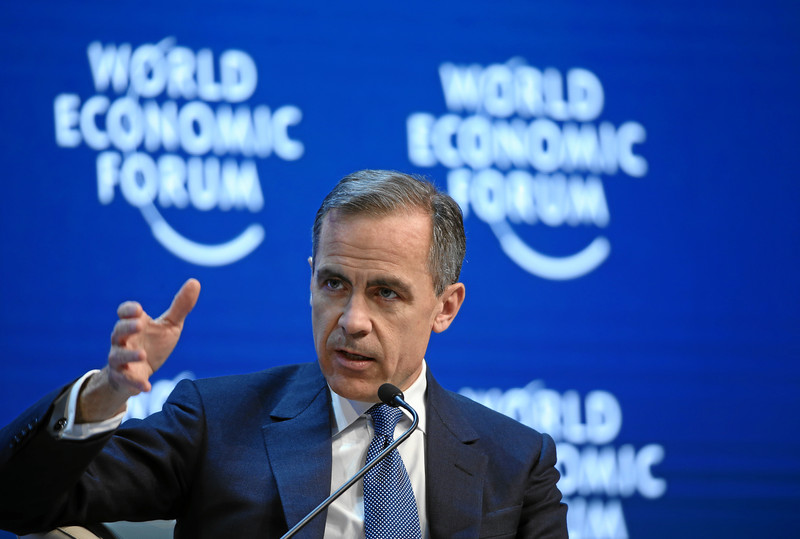
From the Frontier Centre for Public Policy
By Lee Harding
Ottawa’s Major Projects Office is a fix for a mess the Liberals created—where approval now hinges on politics, not merit.
They are repeating their same old tricks, dressing up political favouritism as progress instead of cutting barriers for everyone
On Sept. 11, the Prime Minister’s Office announced five projects being examined by its Major Projects Office, all with the potential to be fast-tracked for approval and to get financial help. However, no one should get too excited. This is only a bad effort at fixing what government wrecked.
During the Trudeau years, and since, the Liberals have created a regulatory environment so daunting that companies need a trump card to get anything done. That’s why the Major Projects Office (MPO) exists.
“The MPO will work to fast-track nation-building projects by streamlining regulatory assessment and approvals and helping to structure financing, in close partnership with provinces, territories, Indigenous Peoples and private investors,” explains a government press release.
Canadians must not be fooled. A better solution would be to create a regulatory and tax environment where these projects can meet market demand through private investment. We don’t have that in Canada, which is why money has fled the country and our GDP growth per capita is near zero.
Instead of this less politicized and more even-handed approach, the Liberals have found a way to make their cabinet the only gatekeepers able to usher someone past the impossible process they created. Then, having done so, they can brag about what “they” got done.
The Fraser Institute has called out this system for its potential to incentivize bribes and kickbacks. The Liberals have such a track record of handing out projects and even judicial positions to their friends that such scenarios become easier to believe. Innumerable business groups will be kissing up to the Liberals just to get anything major done.
The government has created the need for more of itself, and it is following up in every way it can. Already, the federal government has set up offices across Canada for people to apply for such projects. Really? Anyone with enough dollars to pursue a major project can fly to Ottawa to make their pitch.
No, this is as much about the show as it is about results—and probably much more. It is all too reminiscent of another big-sounding, mostly ineffective program the Liberal government rolled out in 2017. They announced a $950-million Innovation Superclusters Initiative “designed to help strengthen Canada’s most promising clusters … while positioning Canadian firms for global leadership.”
That program allowed any company in the world to participate, with winners getting matching dollars from taxpayers for their proposals. (But all for the good of Canada, we were told.) More than 50 applications were made for these sweepstakes, which included more than 1,000 businesses and 350 other participants. In Trudeau Liberal fashion, every applicant had to articulate how their proposal would increase female jobs and leadership and encourage diversity in the long term.
The entire process was like one big Dragon’s Den series. The Liberals trotted out a list of contestants full of nice-sounding possibilities, with maximum hype and minimal reality. Late in the process, Minister of Innovation, Science and Industry Navdeep Bains picked the nine finalists himself (all based in cities with a Liberal MP), from which five would be chosen.
The alleged premise was to leverage local and regional commercial clusters, but that soon proved ridiculous. The “Clean, Low-energy, Effective and Remediated Supercluster” purported to power clean growth in mining in Ontario, Quebec and Vancouver. Not to be outdone, the “Mobility Systems and Technologies for the 21st Century Supercluster” included all three of these locations, plus Atlantic Canada. They were only clustered by their tendency to vote Liberal.
Today, the MPO repeats this virtue-signalling, politicking, drawn-out, tax-dollar-spending drama. The Red Chris Mine expansion in northwest British Columbia is one of the proposals under consideration. It would be done in conjunction with the Indigenous Tahltan Nation and is supposed to reduce greenhouse gas emissions by 70 per cent. That’s right up the Liberal alley.
Meanwhile, the project is somehow part of a proposed Northwest Critical Conservation Corridor that would cordon off an area the size of Greece from development. Is this economic growth or economic prohibition? This approach is more like the United Nations’ Agenda 2030 than it is nation-building. And it is more like the World Economic Forum’s “stakeholder capitalism” approach than it is free enterprise.
At least there are two gems among the five proposals. One is to expand capacity at the Port of Montreal, and another is to expand the Canada LNG facility in Kitimat, B.C. Both have a market case and clear economic benefits.
Even here, Canadians must ask themselves, why must the government use a bulldozer to get past the red tape it created? Why not cut the tape for everyone? The Liberals deserve little credit for knocking down a door they barred themselves.
Lee Harding is a research fellow for the Frontier Centre for Public Policy.
-

 Business1 day ago
Business1 day agoCanada has an energy edge, why won’t Ottawa use it?
-

 Business1 day ago
Business1 day agoFederal Budget 2025: A responsible media would ensure Canadians know about the dismal state of federal finance
-

 Business2 days ago
Business2 days agoCutting Red Tape Could Help Solve Canada’s Doctor Crisis
-
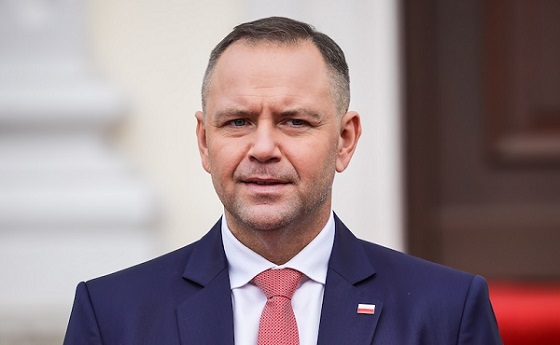
 International15 hours ago
International15 hours agoPoland’s president signs new zero income tax law for parents with two children
-

 Daily Caller2 days ago
Daily Caller2 days agoTrump, Putin Agree On High-Stakes Meetings To Negotiate End To Ukraine War
-
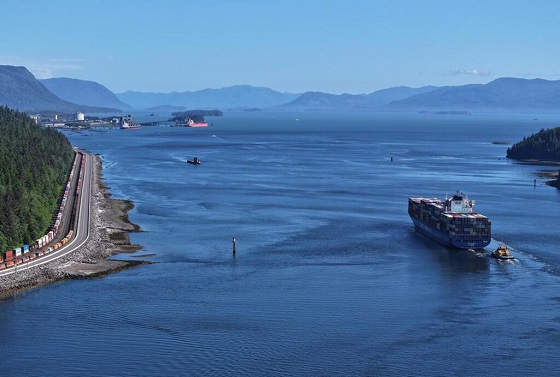
 Energy2 days ago
Energy2 days agoPrince Rupert as the Optimal Destination Port for an Alberta Crude Oil Pipeline –
-
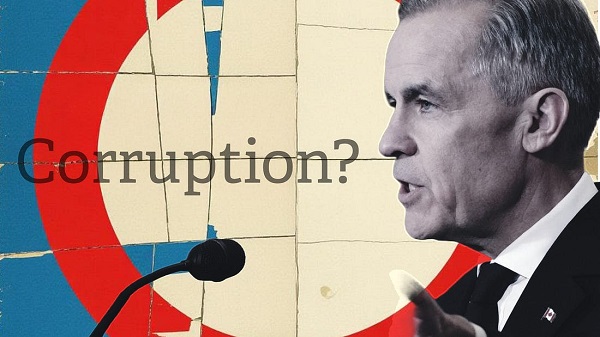
 Business1 day ago
Business1 day agoEthics on Ice: See You Next Year
-

 International2 days ago
International2 days agoClimate contrarians have the president’s ear



